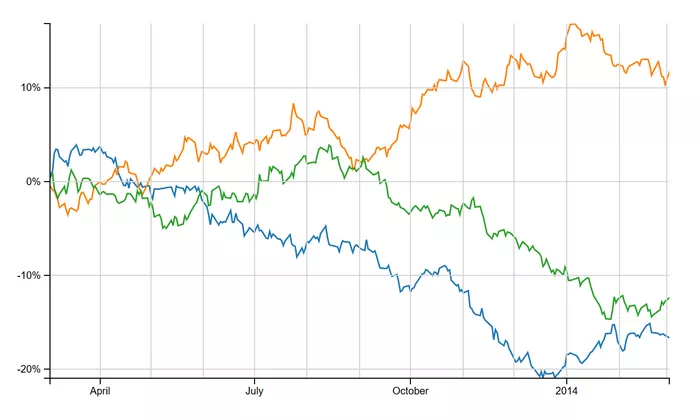Opening a custodial account for stocks is an essential step for those looking to manage investments on behalf of minors or beneficiaries who may not yet be able to invest independently. A custodial account offers an easy and secure way to invest in the stock market while keeping in mind the legal and financial obligations of managing someone else’s assets. This guide will take you through the process of opening a custodial account, understanding its benefits, and exploring how it works in different financial contexts.
What is a Custodial Account?
A custodial account is a financial account where a custodian manages assets for a minor or someone who cannot manage the account on their own due to legal restrictions. Typically, the custodian is a parent or legal guardian who opens and manages the account on behalf of the minor until they reach the age of majority, which varies depending on the state or country.
Custodial accounts are often used for savings, education funds, or investments, including stocks, bonds, mutual funds, and other assets. The custodian has the responsibility to manage the account’s investments and ensure that the funds are used in the best interests of the minor or beneficiary.
Types of Custodial Accounts
Before opening a custodial account, it is important to understand the different types available. The two primary types of custodial accounts are:
1. Uniform Gifts to Minors Act (UGMA) Account
The UGMA account allows the custodian to hold financial assets for the minor. These assets could include stocks, bonds, and mutual funds. The UGMA account is popular for its simplicity and flexibility in terms of the types of assets that can be held. However, the minor gains full control of the account when they reach the age of majority (usually 18 or 21).
2. Uniform Transfers to Minors Act (UTMA) Account
Similar to the UGMA, the UTMA allows for the transfer of assets to minors, but it provides more flexibility. Under a UTMA, the custodian can hold a broader range of assets, including real estate and intellectual property. Like the UGMA, the minor gains full control when they reach the age of majority, but the age can vary depending on the state.
Both types of custodial accounts allow the custodian to manage the account and make investment decisions until the minor reaches adulthood.
Why Open a Custodial Account for Stocks?
There are several compelling reasons to open a custodial account for stocks, including:
1. Educational and Long-Term Financial Planning
A custodial account can be a great tool for setting aside funds for a child’s education or long-term financial goals. By investing in stocks early on, the account can grow over time, benefiting from the power of compounding.
2. Tax Benefits
While the custodian manages the account, the minor may enjoy certain tax benefits. For example, income generated by the account is typically taxed at the child’s tax rate, which is often lower than that of the custodian. However, there are limits to this benefit, and the “kiddie tax” may apply when investment income exceeds a certain threshold.
3. Teaching Financial Responsibility
Opening a custodial account for a minor can be an excellent opportunity to teach them about investing and managing money. As the minor grows older, they can become more involved in managing the account, fostering financial literacy and responsibility.
4. Gift Giving and Estate Planning
Custodial accounts can also be used as a part of estate planning, as assets transferred into the account are considered gifts to the minor. Depending on the value of the assets, it may allow for tax-free gifting up to certain limits.
Steps to Open a Custodial Account for Stocks
Opening a custodial account for stocks is a relatively straightforward process, but there are several important steps to follow. Below is a step-by-step guide to help you navigate the process.
Step 1: Choose the Right Financial Institution
The first step is to select the financial institution where you want to open the custodial account. Many banks, brokerages, and online trading platforms offer custodial accounts. Some of the most popular brokers for custodial accounts include Charles Schwab, Fidelity, TD Ameritrade, and Vanguard. Each institution may offer different features, fees, and investment options, so it is important to compare your choices before making a decision.
Consider the following factors when choosing a financial institution:
Account Fees: Look for institutions that have low or no fees for opening and maintaining custodial accounts.
Investment Options: Ensure the platform offers a range of investment options, including stocks, mutual funds, and ETFs.
Educational Tools: Some platforms offer educational resources that can help teach both the custodian and the minor about investing.
Tax Reporting: Ensure that the financial institution provides proper tax reporting, especially when the account generates income that will be subject to taxes.
Step 2: Gather Necessary Documents
When you are ready to open the custodial account, you will need to gather the required documentation. The specific documents may vary depending on the financial institution, but generally, you will need the following:
Identification for the Custodian: This includes a government-issued ID, such as a driver’s license or passport.
Identification for the Minor: Typically, a birth certificate or Social Security number is required for the minor.
Proof of Address: Some institutions may ask for proof of your address, such as a utility bill or lease agreement.
Taxpayer Identification Number (TIN): The minor’s Social Security number or other tax identification number is required for tax reporting purposes.
Step 3: Fill Out the Application
Once you have gathered the necessary documents, you can begin the application process. Most custodial accounts can be opened online, though some institutions may require paper applications. During the application process, you will need to provide:
The Custodian’s Information: This includes your personal details and relationship to the minor.
The Minor’s Information: Provide the minor’s personal information and Social Security number.
Investment Preferences: Some institutions will ask for the types of investments you are interested in. You may be able to set a strategy for investing in stocks, bonds, or other assets.
Signature of Custodian: The custodian will be required to sign the application, agreeing to manage the account on behalf of the minor.
Step 4: Fund the Account
Once your custodial account is open, you will need to fund it. There are several ways to deposit money into a custodial account:
Cash Deposits: You can transfer money directly into the account from your bank account.
Transfer of Assets: If you already have stocks, bonds, or other investments, you can transfer them into the custodial account.
Check Deposits: Some platforms may allow you to mail in a check to fund the account.
There may be minimum deposit requirements, so be sure to check the terms and conditions of the institution you are working with.
Step 5: Choose Stocks or Other Investments
Once the account is funded, you can begin selecting stocks or other assets to invest in. As the custodian, you are responsible for making investment decisions on behalf of the minor. Consider the minor’s financial goals, risk tolerance, and time horizon when making investment choices.
Popular investment options for custodial accounts include:
Stocks: You can buy shares of individual companies through the account.
Exchange-Traded Funds (ETFs): ETFs offer diversified exposure to various sectors and industries.
Mutual Funds: These funds pool money from multiple investors to buy a range of stocks, bonds, or other assets.
Bonds: Bonds can provide steady income and are less volatile than stocks.
Step 6: Monitor the Account
After the custodial account is set up and investments have been made, it is important to monitor the account regularly. This involves:
Tracking Performance: Keep an eye on the performance of the investments and make adjustments as needed.
Tax Filing: The custodian will need to file taxes on behalf of the minor if the account generates taxable income.
Reviewing the Investment Strategy: As the minor approaches adulthood, it may be necessary to adjust the investment strategy based on their goals and risk tolerance.
Step 7: Transfer Control When the Minor Reaches the Age of Majority
Once the minor reaches the age of majority (usually 18 or 21, depending on the state or country), they will gain full control of the custodial account. At this point, the custodian’s role ends, and the beneficiary can manage the account on their own.
Legal and Tax Considerations
1. Taxation of Custodial Accounts
Income generated by the custodial account is typically subject to taxes. The “kiddie tax” may apply if the minor’s investment income exceeds a certain threshold. Under the kiddie tax rules, income over a certain amount is taxed at the parent’s or custodian’s tax rate.
2. Ownership of Assets
Although the custodian manages the assets, the minor is the legal owner of the account. This means that the funds in the custodial account are considered the minor’s property, and the custodian is only responsible for managing the account in the minor’s best interest.
3. Withdrawals and Restrictions
Withdrawals from a custodial account can generally only be made for the benefit of the minor. However, once the minor reaches the age of majority, they can take control of the account and make withdrawals or investment decisions as they see fit.
Conclusion
Opening a custodial account for stocks is an excellent way to start saving and investing on behalf of a minor. Whether you’re looking to fund a child’s education, provide long-term financial security, or teach them about the stock market, custodial accounts offer many advantages. By following the steps outlined in this guide, you can easily open and manage a custodial account, ensuring that the minor benefits from smart investments and financial growth. Always be mindful of tax implications and legal requirements to ensure the account serves its purpose effectively.
Related topics:































